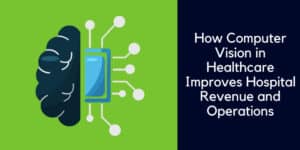What’s inside:
2024 is going to be a transformative year, and today we review some medical inventory-tech trends that will be shaping the healthcare supply chain in the year ahead.
We look at:
- Artificial intelligence (AI) in healthcare
- Machine learning and predictive analytics in healthcare supply chain management
- Using technology to improve supply chain collaboration between partners
- The one critical requirement for AI efficiency – don’t neglect the basics!
- The business value of automated inventory management solutions
Healthcare providers are making decisions today that will improve their supply chain management tomorrow.
Finding the right healthcare automation tools and medical inventory tech to support care delivery and growth is a key task for many healthcare organizations.
Time is ticking by, and healthcare facilities need to jump on board the health-tech train in order to build strong foundations for improved efficiency and performance.
Hospitals, health systems and ambulatory surgery center (ASC) providers with strategies for IT growth and AI adoption will likely leap ahead of those providers who are playing a dangerous waiting game.
2024 could be pivotal for many healthcare organizations, and this blog will look at three health-tech trends that are a top priority for many healthcare providers looking to optimize their supply chain management.
AI driven supply chain data
AI is everywhere, and it’s boosting the power of healthcare technology.
In a recent survey by Bain & Company, healthcare leaders saw AI as a productivity-enhancing tool that reduces administration and boosts efficiency.
A recent statista survey showed that 51 percent of surveyed US healthcare organizations reported they were currently considering AI/machine learning medical inventory tech in order to automate manual processes and reduce costs (2022).
There’s a reason for the urgent adoption of AI by healthcare providers. Artificial intelligence levels up healthcare tools by enhancing data processing capabilities. AI is doing all the number-crunching for providers, bringing an end to “management-by-spreadsheets” and delivering vital data analytics. These meaningful business insights are underpinning more informed and efficient healthcare operations, management and planning.
In the survey, healthcare leadership was keen to use AI to reduce the administrative burdens on their staff, and to reduce risk profiles and enhance operational efficiency.
Their top three priorities for using generative AI were:
- Charge capture and reconciliation
- Structuring and analysis of patient data
- Workflow optimization and automation
The number one priority – charge capture and reconciliation, is a key objective and one that prevents revenue loss in healthcare.
Where surgery is part of the care package, charge capture depends upon accurate data at the point of care, which is a problematic data collection setting for many providers. Supply chain data is particularly complex, and the systems in place often have serious limitations which have a negative impact on surgical supply documentation.
New medical inventory technology is the only way to move forward, as outdated systems have proven inadequate for the task.
Health-tech solutions include using image-recognition and AI technology, and a virtual item master. Next-generation technology can achieve 100% item and charge capture at the point of care with minimum human effort, and maximum automation.

Machine learning algorithms and predictive analytics
Machine learning is a strand of artificial intelligence and helps healthcare management to understand and learn from mass data sets. Machine learning algorithms are used to quickly analyze data – this technology can interpret big data and produce meaningful insights in a fraction of the time it would take an individual, or even a team!
According to research, the artificial intelligence in healthcare market was worth USD 9.64 billion in 2022, and is expected to reach USD 272.91 billion by 2030, a rise of 51.87%. The combination of AI and machine learning is reshaping healthcare, making the collection and flow of information faster, more efficient and more accurate.
Predictive analytics provides statistical analysis, identifying patterns and trends in vast volumes of data. Once the data has been analyzed, the system can make predictions that underpin activities such as healthcare demand forecasting.
In terms of supply chain management, the use of machine learning and predictive analytics can help providers to:
- Better understand the way their organization is operating
- Identify areas of inefficiency
- Use supply chain data to optimize vendor contracts and relationships
- Ensure that product procurement is data-driven
- Understand supply utilization patterns, and more.
Machine learning and predictive analytics can produce valuable data that can have a real impact on day-to-day operations, as well as future planning.
Using medical inventory tech to improve partner collaboration
Our third trend is to recognize that technology is providing supply chain stakeholders with shared inventory vision and data.
This integrated approach removes existing barriers, while fostering transparency and trust. AI can be used to monitor contract compliance, facilitate better vendor management, and forge stronger relationships with partners.
Smooth supply chains start with shared visibility of inventory and a joint understanding of consumption data. Gaining common vision in these two key areas is a gamechanger that prevents disagreements and delays.
New technology is bringing together partners such as vendors, distributors, GPOs and providers, for a more cohesive approach to healthcare supply chain management.
The one critical requirement for AI efficiency
Technologies such as artificial intelligence may be excellent at converting mass data into meaningful business intelligence, but in order to be reliable, there is one key element that needs to be in place – and that is full and accurate data collection.
It’s no good investing in fancy data processing tools if a provider hasn’t first ensured that its data collection systems are efficient.
That means that :
- All items need to be visible – for both stored and utilized items
- Item data needs to be comprehensive and accurate
The fact is that data collection technology often fails to achieve full and complete data capture – and that has a huge impact on the usefulness of data analytics.
The old adage is as true today as it was in yesteryear: Garbage in, Trash out.
So, it’s time to turn trash into treasure.
The first step to upgrading any hospital supply chain management solution is to introduce robust data capture systems for monitoring stock levels and utilization. These two data sets are vital for informing hospital supply chain decision making.
Healthcare supply chain systems that incorporate an effective data capture solution, as well as AI analytic capability, are the winning combination.
The value of automated inventory management solutions
When the right automated inventory management solution is in place, supply chain management becomes efficient and can achieve:
- A reduced, perpetual inventory
- Significant supply chain cost savings
- Reduced wastage
- Streamlined workflows
- Reduced labor for staff including nurses, materials management, supply chain
- Improved business information for finance, directors, and c-suite.
- Optimized medical billing and case revenue
- Enhanced patient safety and compliance with audit standards and regulations.
Organizations adopting new tech tools are future-proofing their provision and sharpening their competitive edge.
Replacing manual systems with AI automation tools in healthcare simplifies internal processes and boosts performance.
It’s becoming clear that adopting AI into the supply chain is now a strategic imperative.
Supply Chain Management Fit for the Future
So, these are our three trends for 2024; AI, machine learning and predictive analytics for the analysis of huge amounts of data, as well as the technical tools that facilitate shared stakeholder vision.
When hospitals are able to deal with vast amounts of data, they can better understand how to reduce costs, improve efficiency and enhance the quality of patient care. Upgrading data collection systems provides healthcare organizations with more clarity and better guidance. and can catapult an organization forward by improving their competitive advantage.
Find out more about transforming your supply chain management with supply-chain management solutions based on artificial intelligence (AI).






